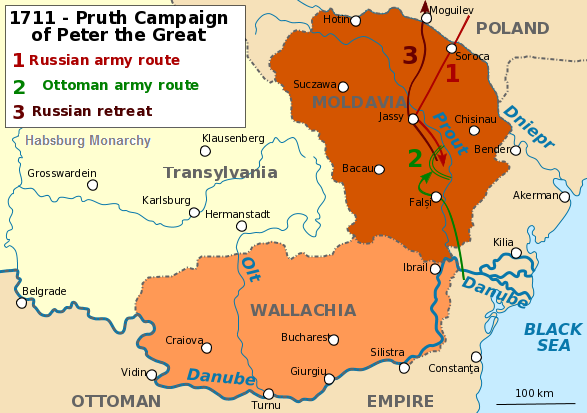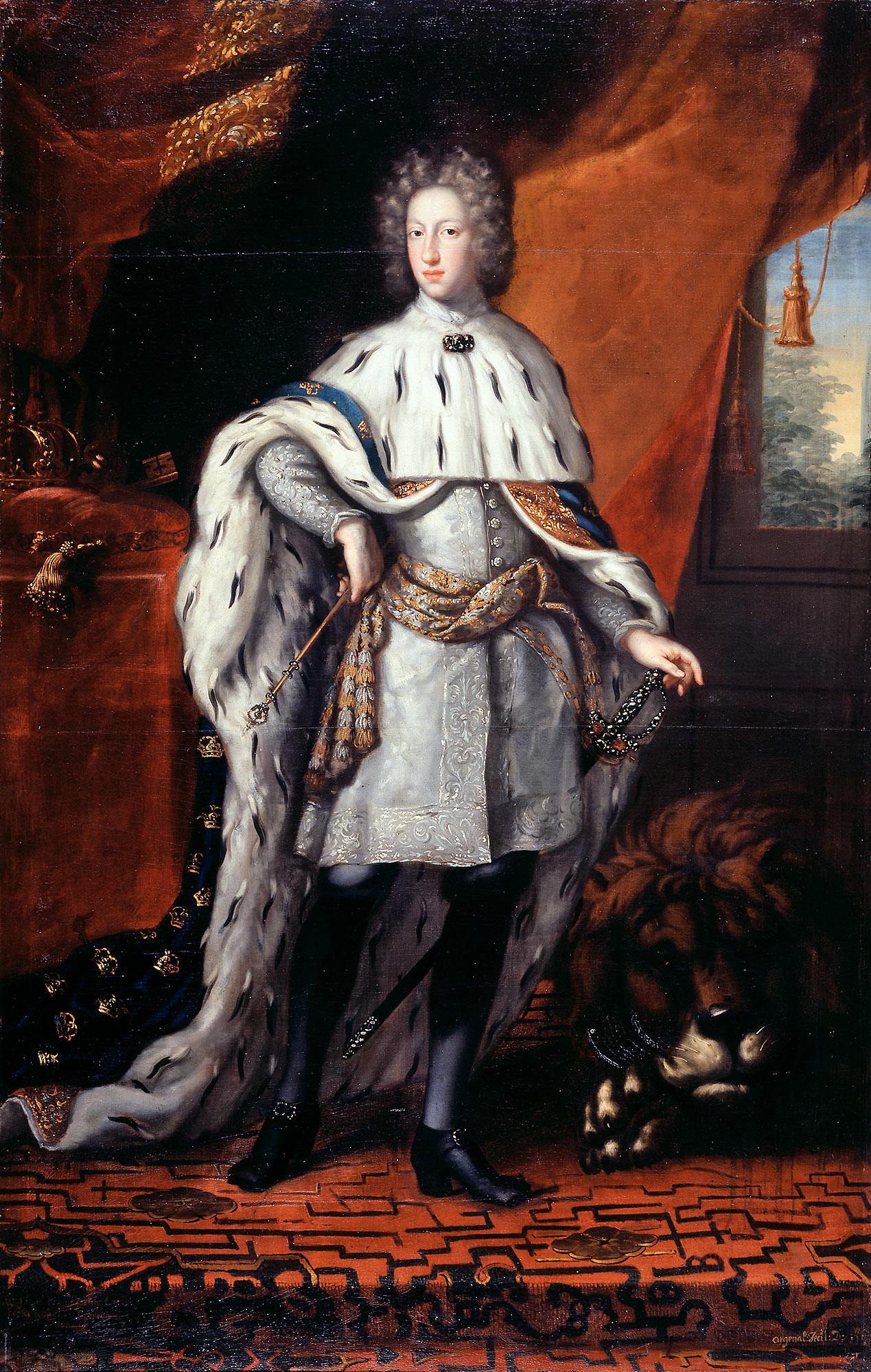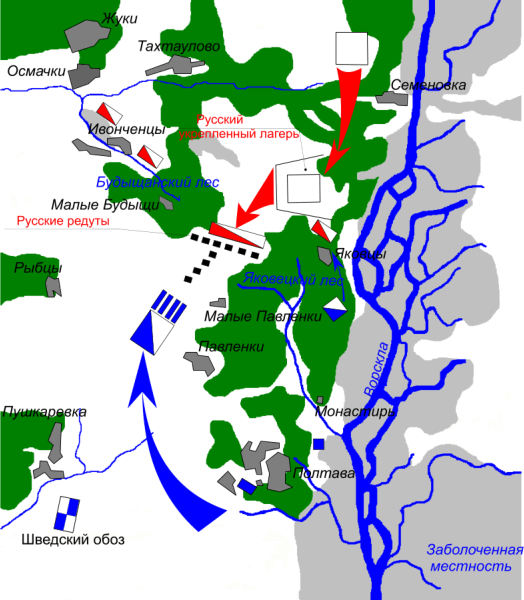|
13th General Field Marshal Count Lacy's Belozersk Infantry Regiment
The 13th Belozersk Infantry Regiment, or 13th General Field Marshal Prince Volkonsky's Infantry Regiment (), was an infantry regiment of the Russian Empire's Imperial Russian Army. It was known by different names for much of its existence but most of its designations included "Belozersk Infantry Regiment." Formed in 1708 in the reign of Czar Peter the Great and disbanded in 1918, the regiment fought in the Great Northern War, the Russian campaign of 1812, the War of the Sixth Coalition, the suppression of the Polish November Uprising, and the Crimean War, among other conflicts. History The 13th Belozersk celebrated its anniversary on 6 December, the feast day of Saint Nicholas, although it was actually formed on Beshankovichy as Prince Repnin's Grenadier Regiment on 10 March 1708. The regiment was formed from the grenadier companies of the Shlisselburg, Butyr, Yaroslavl, Nizhny Novgorod, Belgorod, Neva, Yamburg, and Tver Regiments. Late that year, it was renamed Teyler's ... [...More Info...] [...Related Items...] OR: [Wikipedia] [Google] [Baidu] |
Russian Imperial Army
The Imperial Russian Army (russian: Ру́сская импера́торская а́рмия, tr. ) was the armed land force of the Russian Empire, active from around 1721 to the Russian Revolution of 1917. In the early 1850s, the Russian Army consisted of more than 900,000 regular soldiers and nearly 250,000 irregulars (mostly Cossacks). Precursors: Regiments of the New Order Russian tsars before Peter the Great maintained professional hereditary musketeer corps known as ''streltsy''. These were originally raised by Ivan the Terrible; originally an effective force, they had become highly unreliable and undisciplined. In times of war the armed forces were augmented by peasants. The regiments of the new order, or regiments of the foreign order (''Полки нового строя'' or ''Полки иноземного строя'', ''Polki novovo (inozemnovo) stroya''), was the Russian term that was used to describe military units that were formed in the Tsardom of Rus ... [...More Info...] [...Related Items...] OR: [Wikipedia] [Google] [Baidu] |
War Of The Sixth Coalition
In the War of the Sixth Coalition (March 1813 – May 1814), sometimes known in Germany as the Wars of Liberation, a coalition of Austria, Prussia, Russia, Spain, the United Kingdom, Portugal, Sweden, and a number of German States defeated France and drove Napoleon into exile on Elba. After the disastrous French invasion of Russia of 1812 in which they had been forced to support France, Prussia and Austria joined Russia, the United Kingdom, Sweden, and Portugal, and the rebels in Spain who were already at war with France. The War of the Sixth Coalition saw major battles at Lützen, Bautzen, and Dresden. The even larger Battle of Leipzig (also known as the Battle of Nations) was the largest battle in European history before World War I. Ultimately, Napoleon's earlier setbacks in Spain, Portugal and Russia proved to be the seeds of his undoing. With their armies reorganized, the allies drove Napoleon out of Germany in 1813 and invaded France in 1814. The Allies defeated ... [...More Info...] [...Related Items...] OR: [Wikipedia] [Google] [Baidu] |
Belozersk
Belozersk (russian: Белозе́рск), known as Beloozero (russian: Белоозеро, label=none) until 1777, is a town and the administrative center of Belozersky District in Vologda Oblast, Russia, located on the southern bank of Lake Beloye, from which it takes the name, northwest of Vologda, the administrative center of the oblast. Population: History Known as Beloozero (, lit. ''white lake'') until 1777, it was first chronicled in 862 as one of the five original Russian towns (the other four being Murom, Novgorod, Polotsk, and Rostov). According to the Primary Chronicle, Sineus, a brother of Rurik, became the prince of Beloozero in 862. However, Sineus most likely never existed. On several occasions, the settlement was moved from one bank of the lake to another. In the 11th century, the region was still inhabited primarily by Finnic peoples tribes who fiercely resisted Christianization. In 1071, local pagan priests rose in rebellion, which was put down by the ... [...More Info...] [...Related Items...] OR: [Wikipedia] [Google] [Baidu] |
Ottoman Empire
The Ottoman Empire, * ; is an archaic version. The definite article forms and were synonymous * and el, Оθωμανική Αυτοκρατορία, Othōmanikē Avtokratoria, label=none * info page on book at Martin Luther University) // CITED: p. 36 (PDF p. 38/338) also known as the Turkish Empire, was an empire that controlled much of Southeast Europe, Western Asia, and North Africa, Northern Africa between the 14th and early 20th centuries. It was founded at the end of the 13th century in northwestern Anatolia in the town of Söğüt (modern-day Bilecik Province) by the Turkoman (ethnonym), Turkoman tribal leader Osman I. After 1354, the Ottomans crossed into Europe and, with the Ottoman wars in Europe, conquest of the Balkans, the Ottoman Anatolian beyliks, beylik was transformed into a transcontinental empire. The Ottomans ended the Byzantine Empire with the Fall of Constantinople, conquest of Constantinople in 1453 by Mehmed the Conqueror. Under the reign of Sule ... [...More Info...] [...Related Items...] OR: [Wikipedia] [Google] [Baidu] |
Pruth River Campaign
The Russo-Ottoman War of 1710—1711, also known as the Pruth River Campaign, was a brief military conflict between the Tsardom of Russia and the Ottoman Empire. The main battle took place during 18-22 July 1711 in the basin of the Pruth river near Stănilești (Stanilesti) after Tsar Peter I entered the Ottoman vassal Principality of Moldavia, following the Ottoman Empire’s declaration of war on Russia. The ill-prepared 38,000 Russians with 5,000 Moldavians, found themselves surrounded by 200,000 Turks under Grand Vizier Baltaci Mehmet Pasha. After three days of fighting and heavy casualties the Tsar and his armies were allowed to withdraw after agreeing to abandon the fortress of Azov and its surrounding territory. The Ottoman victory led to the Treaty of the Pruth which was confirmed by the Treaty of Adrianople. Background The Russo-Ottoman War of 1710-1711 broke out as a result of the Great Northern War, which pitted the Swedish Empire of King Charles XII of Sweden ag ... [...More Info...] [...Related Items...] OR: [Wikipedia] [Google] [Baidu] |
Charles XII Of Sweden
Charles XII, sometimes Carl XII ( sv, Karl XII) or Carolus Rex (17 June 1682 – 30 November 1718 O.S.), was King of Sweden (including current Finland) from 1697 to 1718. He belonged to the House of Palatinate-Zweibrücken, a branch line of the House of Wittelsbach. Charles was the only surviving son of Charles XI and Ulrika Eleonora the Elder. He assumed power, after a seven-month caretaker government, at the age of fifteen. In 1700, a triple alliance of Denmark–Norway, Saxony– Poland–Lithuania and Russia launched a threefold attack on the Swedish protectorate of Holstein-Gottorp and provinces of Livonia and Ingria, aiming to draw advantage as the Swedish Empire was unaligned and ruled by a young and inexperienced king, thus initiating the Great Northern War. Leading the Swedish army against the alliance, Charles won multiple victories despite being usually significantly outnumbered. A major victory over a Russian army some three times the size in 1700, at the ... [...More Info...] [...Related Items...] OR: [Wikipedia] [Google] [Baidu] |
Battle Of Poltava
The Battle of Poltava; russian: Полта́вская би́тва; uk, Полта́вська би́тва (8 July 1709) was the decisive and largest battle of the Great Northern War. A Russian army under the command of Tsar Peter I defeated a Swedish army, under the command of Carl Gustaf Rehnskiöld. The battle put an end to the status of the Swedish Empire as a European great power, as well as its eastbound expansion, and marked the beginning of Russian hegemony in Northern Europe. During the course of six years in the initial stages of the war, King Charles XII and the Swedish Empire had defeated almost all participants in the anti-Swedish coalition, which initially consisted of the Polish-Lithuanian Commonwealth, Denmark-Norway and the Tsardom of Russia. The latter under Tsar Peter I's rule was the only one still undefeated. Charles XII therefore chose to invade Russia in the autumn of 1707 and march towards Moscow with a large Swedish army. However, the campaign ... [...More Info...] [...Related Items...] OR: [Wikipedia] [Google] [Baidu] |
Peter Lacy
Peter Graf von Lacy (russian: link=no, Пётр Петро́вич Ла́сси, tr. ; en, Pierce Edmond de Lacy; ga, Peadar (Piarais Éamonn) de Lása; 26 September 1678 – 30 April 1751) was an Irish-born soldier who later served in the Imperial Russian army. Considered one of the most successful Russian Imperial commanders before Rumyantsev and Suvorov, in a military career that spanned half a century he claimed to have participated in 31 campaigns, 18 battles, and 18 sieges. He died on his private estate in Riga, where he served as governor for many years. One of his sons was Count Franz Moritz von Lacy, who went on to serve in the Imperial Habsburg Army, while his nephew George Browne (1698-1792) was also a general in the Russian army. Life Family Peter Lacy was born Pierce Edmond de Lacy on 26 September 1678 in Killeedy near Limerick into a noble Irish family. In an autobiography preserved by his descendants, Lacy claimed that his father Peter was the son of ... [...More Info...] [...Related Items...] OR: [Wikipedia] [Google] [Baidu] |
1st Neva Infantry Regiment
The 1st General Field Marshal Count Lacy's, His Majesty King of the Hellenes' Neva Infantry Regiment (russian: 1-й пехотный Невский генерал-фельдмаршала графа Ласси, ныне Его Величества Короля Эллинов полк) was an infantry regiment of the Russian Imperial Army. It was known by different names for much of its existence but most of its designations included "Neva Infantry Regiment." It served in several conflicts, including the Great Northern War, Seven Years' War, the Russo-Swedish War of 1808–1809, the Russo-Turkish War of 1877–78, and the Russo–Japanese War. By 1914, the 1st Neva Infantry Regiment was part of the 1st Infantry Division, and it fought in World War I before being dissolved in 1918, after the events of Russian Revolution. Organization The unit was first formed in Saint Petersburg on 21 July 1706 as the "Kulikov Infantry Regiment" by order of Russian Emperor Peter the Great. On 10 ... [...More Info...] [...Related Items...] OR: [Wikipedia] [Google] [Baidu] |
Yaroslavl Infantry Regiment
Yaroslavl ( rus, Ярослáвль, p=jɪrɐˈsɫavlʲ) is a city and the administrative center of Yaroslavl Oblast, Russia, located northeast of Moscow. The historic part of the city is a World Heritage Site, and is located at the confluence of the Volga and the Kotorosl rivers. It is part of the Golden Ring, a group of historic cities northeast of Moscow that have played an important role in Russian history. Population: Geography Location The city lies in the eastern portion of Yaroslavl Oblast. The nearest large towns are Tutayev ( to the northwest), Gavrilov-Yam ( to the south), and Nerekhta ( to the southeast). The historic center of Yaroslavl lies to the north of the mouth of the Kotorosl River on the right bank of the larger Volga River. The city's entire urban area covers around and includes a number of territories south of the Kotorosl and on the left bank of the Volga. With nearly 600,000 residents, Yaroslavl is, by population, the largest town on the Volga ... [...More Info...] [...Related Items...] OR: [Wikipedia] [Google] [Baidu] |
13th Erivan Infantry Regiment
In music or music theory, a thirteenth is the Musical note, note thirteen scale degrees from the root (chord), root of a chord (music), chord and also the interval (music), interval between the root and the thirteenth. The interval can be also described as a Interval (music)#Simple and compound, compound major sixth, sixth, spanning an octave plus a sixth. The thirteenth is most commonly major or minor . A thirteenth chord is the stacking of six (major third, major or minor third, minor) thirds, the last being above the 11th of an eleventh chord. Thus a thirteenth chord is a tertian (built from thirds) chord containing the interval of a thirteenth, and is an extended chord if it includes the ninth and/or the eleventh. "The jazzy thirteenth is a very versatile chord and is used in many genres." Since 13th chords tend to become unclear or confused with other chords when Inverted chord, inverted, they are generally found in root position.Benward & Saker (2009). ''Music in ... [...More Info...] [...Related Items...] OR: [Wikipedia] [Google] [Baidu] |






